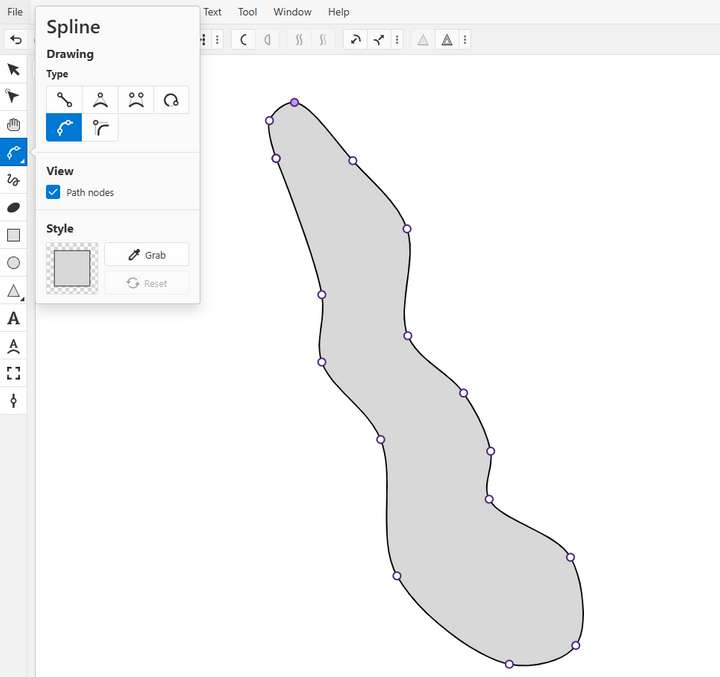What tools are efficient for drawing curves In one step?
-
What tools are efficient for drawing curves In one step?(Besides secondary modifications nodes and control handles and Besides Adobe's Bézier Pen tool,)
The following tools are available for drawing curves :
Adobe Illustrator :Curvature tool ,
Inkscape :b-spline tool(CorelDRAW && Boxy SVG also have ),
CorelDRAW :3-point curve tool ,
Affinity Designer :pen's smart nodes,
Corel Vector&&FreeHand : bezigon tool;
Or there are other tools, Which of these tools vectorstyler already has and which are on the roadmap;
welcome to discuss;
Add 1:Boxy SVG editor have Catmull Rom:https://boxy-svg.com/blog/17/catmull-rom-and-basis-splines
Add 2:Raph Levien’s new spline,No Name:https://raphlinus.github.io/curves/2018/12/21/new-spline.html
-
There's one missing here: Catmull Rom. Which is one of the ways in which splines are averaged. It's a very intuitive way to draw complex curves. It is not a Bezier spline. You can try it in Boxy SVG if you want.
-
@lilith None of those tools from the are available yet in VS.
-
@VectorStyler said in What tools are efficient for drawing curves In one step?:
@lilith None of those tools from the are available yet in VS.
Which are on the roadmap
-
@lilith Although I don't understand these mathematical formulas either, they may be helpful to some smart people
Splines in 5 minutes: Part 1 -- cubic curves:https://youtu.be/YMl25iCCRew?
Splines in 5 Minutes: Part 2 -- Catmull-Rom and Natural Cubic Splines:https://youtu.be/DLsqkWV6Cag?
Splines in 5 minutes: Part 3 -- B-splines and 2D: https://youtu.be/JwN43QAlF50?
The Beauty of Bézier Curves:https://youtu.be/aVwxzDHniEw?
The Continuity of Splines:https://youtu.be/jvPPXbo87ds?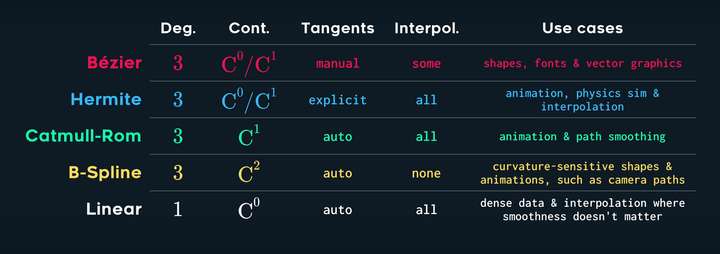
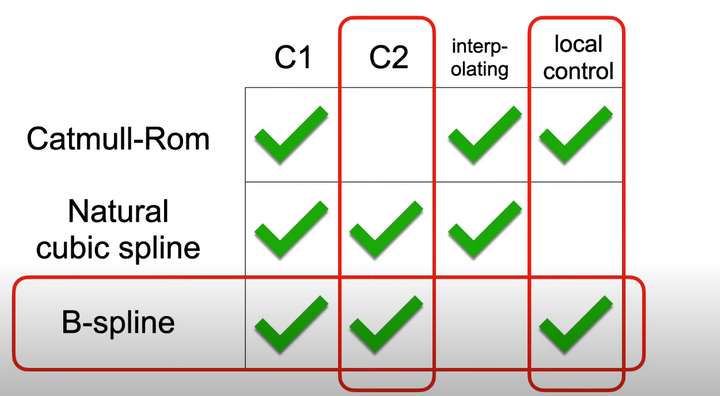
-
Splines:
Arc - Useful for continuous, flowing, circular segments.
Quad bezier - Has three points, start, end, control point: Useful for a series of smooth, but not necessarily circular segments.
Cubic bezier - Has two points, start and end, and four control handles, 2 each. The so called "pen tool".
Catmull Rom - Has no handles. A series of nodes, averaged automatically based on the preceding node.
Polygonal - Simple straight line curves with sharp corner points.Not really a spline, but a way of drawing splines:
Bezigon tool - Combines bezier and polygonal segments in an intelligent and inutive way. Combines three kinds of nodes, corner, tangential and smooth nodes. Series of corner nodes produces straight line segments. Series of smooth nodes produces smooth segments, with control handles automatically balanced to create a smooth curve. Series of tangential nodes really produces straight line segments.Corner, smooth, tangent and corner produces - a Semicircle joined to a straightline smoothly.
Verdict: Bezigon is the most efficient, intelligent for drawing smooth curves easily. By efficiency I mean, the least number of nodes.
-
@lilith well, thank you for Daniel his reminder. You can try to use Catmull Rom splines it for free here:
https://boxy-svg.com/app
https://boxy-svg.com/ideas/244/catmull-rom-splines
https://boxy-svg.com/blog/17/catmull-rom-and-basis-splines
Conversion Between Cubic Bezier Curves and Catmull–Rom Splines:
https://link.springer.com/article/10.1007/s42979-021-00770-x
-
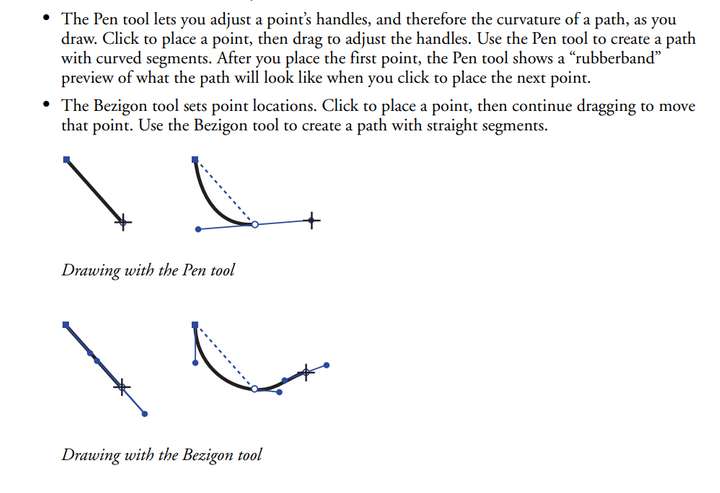
Found this from the old FreeHand manual. Can you believe I still have it!
Anyway, that shows you clearly what's happening. The handles of the previous are balanced based on the location of the next node. Thus creating smooth curves easily.
-
Catmull Rom is indeed very, very intuitive. If it were up to me, I'd just add CR and Bezigon as two modes. Between Cubic, Quad, CR and Bezigon, you need no other tool for drawing vector curves.
-
This post is deleted!
-
@Daniel I still don't understand the difference between Adobe Illustrator Curvature and Catmull Rom, and what is the mathematical principle behind Adobe Illustrator Curvature?
-
@lilith: Curvature and Catmull Rom have nothing to do with each other. Curvature tool is a simple combination of bezier and polgyonal segment. Catmull Rom is a way of drawing splines. Two things here: One is a tool, the other is a spline (involving it's own maths).
I'm out of depth to explain the maths to you. As far as I can I understand as a non-technical person, Catmull Rom simply and very usefully by interpolating nodes smoothly.
This is what happens when tangents don't match. You get a cusp node.

With Catmull Rom equation, the tangents are smoothed out automatically without you having to do anything like in Bezier splines. Like this.
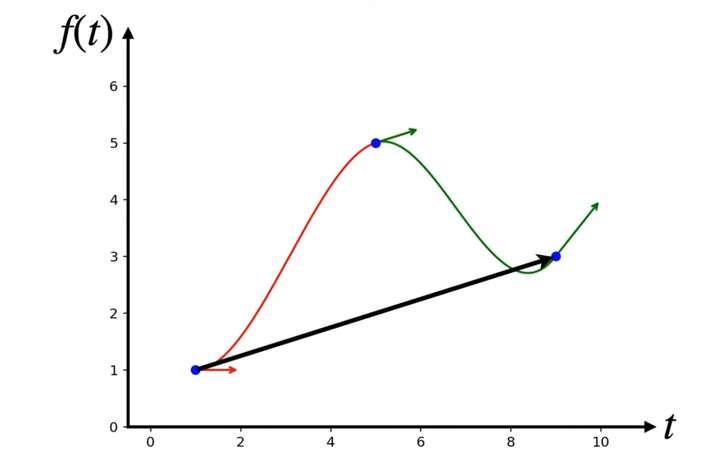
You can now continuously and seamlessly join as many segments as you want and the nodes will ALWAYS be smoothly joined without cusp nodes or knots. That tells you what is for and what it is NOT for. It is FOR tracing complex, organic shapes. It is NOT for tracing simple geometric shapes. That's why I've been asking (campaigning) for Bezigon, which is a different TOOL, specifically meant for technical drawing (FreeHand excels here). Technical drawings as well typeface design both rely on geometric shapes. With Catmull Rom, you get this:
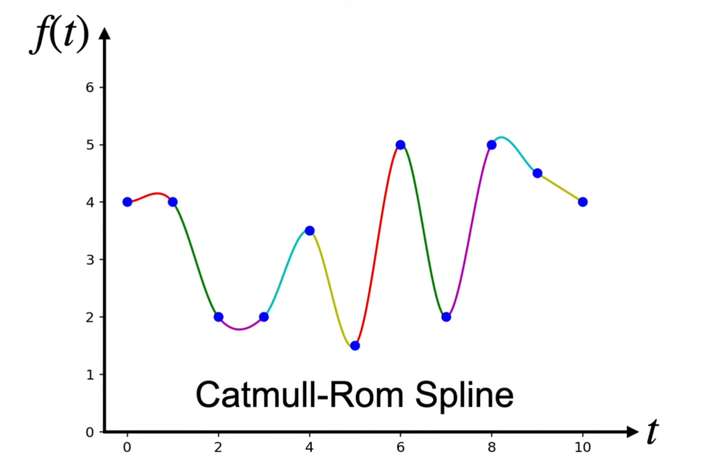
Historical aside: Illustrator is NOT the first commercially available vector program that made Bezier curve available to everyday users. Until then you had to spend hundreds of thousands of dollars to get fully capable vector software.
The first program was: Fontographer by Altsys, the parent company of FreeHand. Which was then sold to Aldus, then acquired by Macromedia, and murdered by Adobe. Fontographer introduced the concept of tangent, corner and smooth nodes. Suddenly, everyone could design typefaces. Thousands of typefaces were built on it.
-
Curvature tool combines simply coverts corner to smooth and smooth to corner nodes. That's it. That's all it is good for. You can't do much else with it. And it does so in a very unintelligent way, hence it's appeal to beginners in vector. No offense!
I'm a copywriter by trade, and had to learn vector design from a designer. And she illustrated to me how Curvature Tool reverses the logic of Bezier pen tool and makes it easy for people to imagine the next steps. Essentially, you place your next nodes for simple, smooth segments at the "next 45 degree point". You draw straightlines between all these 45 degree points and then click to convert the nodes. That's it.
In bezier pen tool, you do the same, but you drag the point to balance the handles. https://bezier.method.ac - this is where I finally got it.
-
And for anyone interested: I posted a video in the forum a while ago,
which I'm not sure if it's helpful here. But it's beautiful to watch.
It's called "The Beauty of Splines." Where some concepts are shown
-
@Subpath: it is beautiful. Thank you. The idea of smooth curves is so ancient. As in literally thousands of years old. If you'd like to see fascinating study of how curves were used across cultures, get a used copy of Designa by Wooden Books. And get Helicon to go with it.
https://woodenbooks.com/index.php?id_product=203&controller=product
Every page is packed with information.
-
@lilith Adobe Illustrator Curvature mathematical principle(maybe):
https://people.engr.tamu.edu/schaefer/research/kcurves.pdf
-
@lilith A new spline:
https://raphlinus.github.io/curves/2018/12/21/new-spline.html
https://github.com/raphlinus/spiro
https://github.com/raphlinus/spline-research
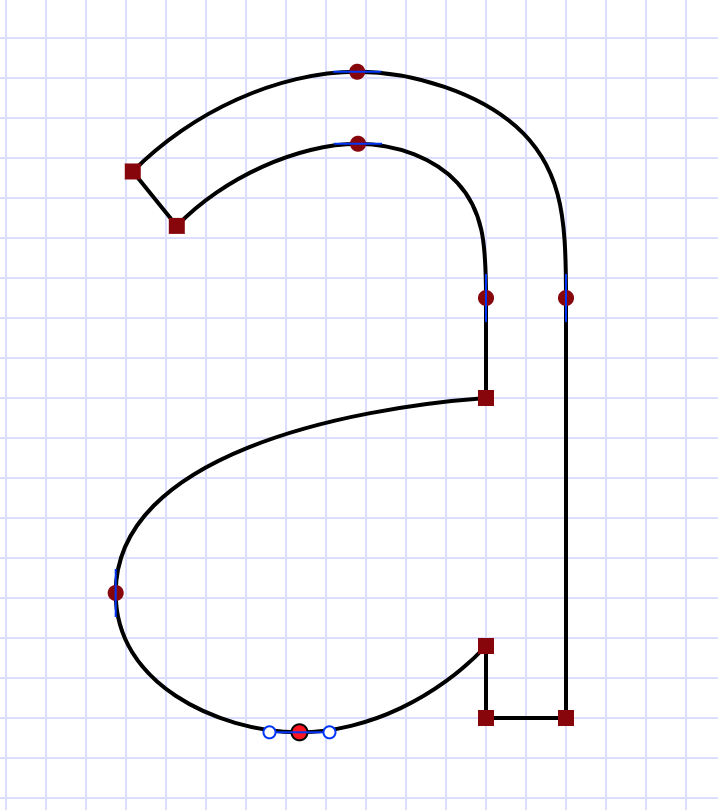
-
@Subpath @VectorStyler look this :https://raphlinus.github.io/curves/2018/12/21/new-spline.html
try it :https://spline.technology/demo/
-
Thanks, a great find. I like it and found it interesting
to play with the demo. Seems like an easy way for
nice curves.
-
@lilith that's the hyperbezier combining three types of splines.
